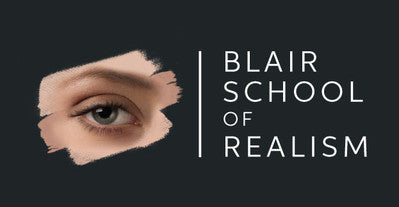We've all had our struggles rendering hair or grass.
No matter how much detail we add, it just doesn't look right, and we just can't put our finger on the problem. We fear that it will forever look like it was drawn by a child.

The main problem here is that we are trying to render what we know instead of what we see, and most artists attempt to represent every single hair or blade of grass in their rendering because they "know" it's there.

However, think about how hair really appears to us. When we look at a person, we don't really see every individual hair. We see groups of hair, that often appears like ribbons when its long.
It's often enough to suggest the presence of hair. You see some artists avoiding rendering any single hair or even group of hairs as a matter of style, and yet their render reads just like hair.
In this Alberto Vargas painting the hair is only suggested without any details.
It's the same with painting grass or foliage. Often the suggestion of something is enough to communicate the intention of the artist.
How much is enough?
I get that question a lot, and it might be one that could never be easily answered.
It really depends on the context. For example, the hair in the Vargas painting above works because we recognize that it is presented on a head. We are already predisposed to understand that a woman's head (usually) has hair on it, so we assign hair to it without scrutinizing the representative content.

Note how incomplete this area of John Salt's photorealistic painting appears when examined closely.
This idea of unconsciously adding content to incomplete imagery is called the etcetera principle, and was coined by photorealist, John Salt.
How do we use this?
This principle saves you from having to render every single blade of grass and every single hair, because if you finish it enough, the viewer will complete the rest of the image for you.

Here is an old painting of my beloved studio cat. Take a close look, and you'll realize that it is far from finished. Look at the ears. Most people wouldn't notice that the ears are unfinished until it's pointed out.
I usually take my paintings to about 85% of completion, and often this is enough for most parts of the painting. Any areas that appear incomplete will be revisited and carried further, but you would be surprised with how little you need to finish and still realize an appearance of completion.
The other advantage of going only to 85% completion is that is protects the airbrush artist from overshooting and going too dark. If you have this habit, using the etcetera principle might save you a lot of grief.
I hope this information helps.
Until next time, good luck with all your artistic endeavors!





Tim
March 14, 2025
Very useful info, once again, clearly explained. Thank you.